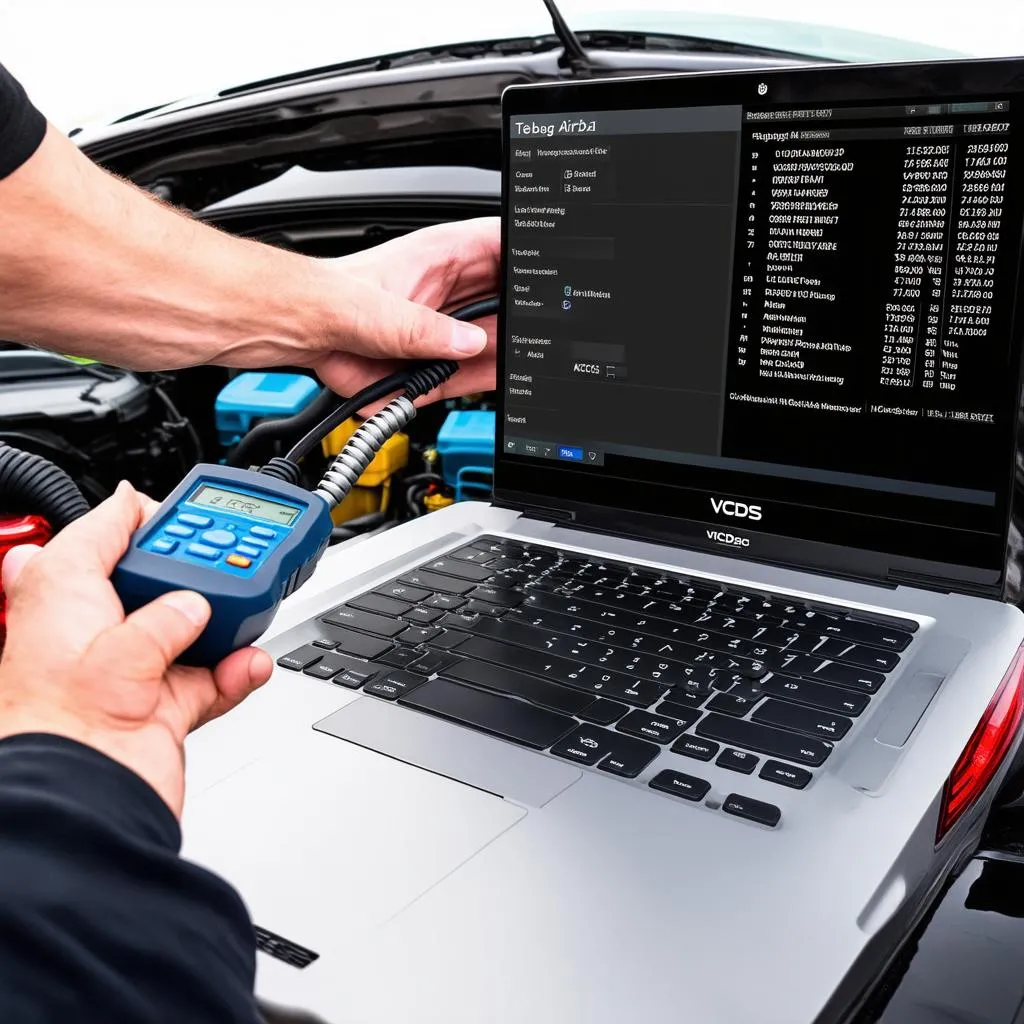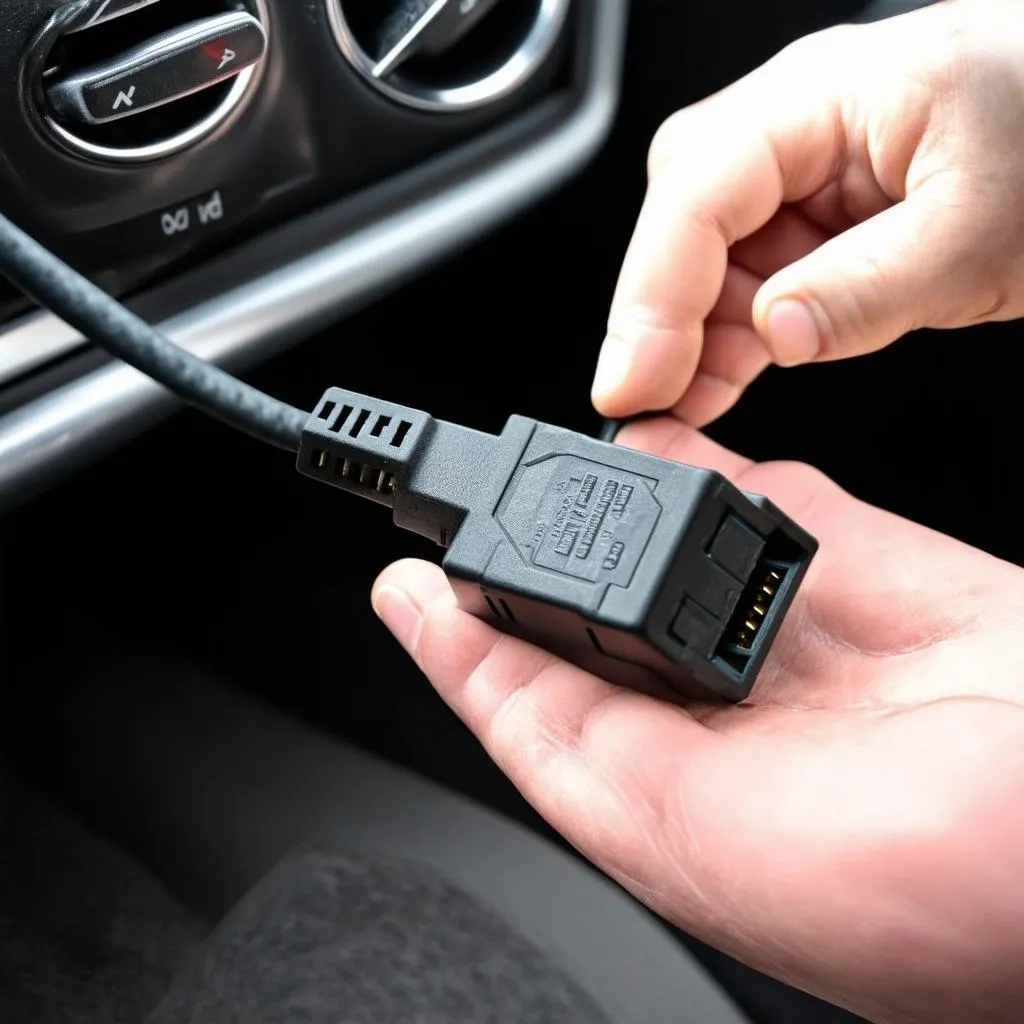The airbag system in your vehicle is a critical safety feature, designed to deploy in the event of a collision and protect occupants from serious injury. As with any complex automotive system, airbag modules can experience issues that require diagnostics and repair. This is where VCDS (Vag-Com Diagnostic System), a powerful diagnostic software, comes into play. This article delves into the intersection of VCDS and airbag systems, providing valuable insights for both car enthusiasts and professionals.
What is VCDS and How Does it Work with Airbag Systems?
VCDS is a Windows-based diagnostic software developed by Ross-Tech that interfaces with the onboard computers of Volkswagen Group vehicles (Volkswagen, Audi, Seat, Skoda, Bentley, Lamborghini). It allows users to access, read, and clear fault codes, view live data streams, perform adaptations, and conduct various other diagnostic and programming functions.
When it comes to airbag systems, VCDS proves invaluable. It enables you to:
- Read and Clear Fault Codes: Identify specific issues with the airbag system, such as faulty sensors, deployed airbags, or communication errors. VCDS provides detailed fault code descriptions, making troubleshooting more efficient.
- View Live Data: Monitor the status of various airbag components in real-time, including sensor readings, module status, and deployment criteria.
- Perform Component Activation: Test individual components like seatbelt pretensioners and airbag sensors to confirm their functionality.
- Reset Airbag Modules: After an airbag deployment or system repair, VCDS can be used to reset the airbag control module, bringing the system back online.
Common Airbag Fault Codes and Their Meanings
Understanding common airbag fault codes can help you pinpoint issues more effectively. Here are a few examples:
- 01222 – Crash Sensor Side Airbag; Passenger Side (G180): Indicates a problem with the passenger-side crash sensor. This could be due to a faulty sensor, wiring issues, or a problem with the sensor’s connection.
- 00588 – Airbag Igniter; Driver Side (N95): Suggests a malfunction with the driver’s side airbag igniter. This might involve a faulty igniter, wiring harness issues, or a problem with the airbag module itself.
- 01598 – Crash Sensor for Side Airbag; Driver Side (G179): Points to an issue with the driver-side crash sensor, similar to the passenger-side fault code.
Using VCDS to Diagnose and Resolve Airbag Issues
Let’s walk through a hypothetical scenario to illustrate how VCDS can be used:
Problem: The airbag warning light is illuminated on your dashboard.
Steps:
- Connect VCDS: Connect your VCDS interface to your vehicle’s OBD-II port and launch the software.
- Select Control Module: Choose “Select Control Module” and then “15-Airbag” to access the airbag control module.
- Read Fault Codes: Click on “Fault Codes – 02” to retrieve any stored fault codes.
- Analyze Codes: Let’s say you encounter the code “00588 – Airbag Igniter; Driver Side (N95).”
- Further Diagnostics: Consult VCDS’s guided fault finding or online resources like Cardiagtech to investigate the code in detail.
- Inspection and Repair: You might need to inspect wiring harnesses, check connections, or test the igniter itself.
- Clear Fault Codes: After addressing the issue, use VCDS to clear the fault code and ensure the warning light is extinguished.
Important Note: Working with airbag systems can be dangerous. Always disconnect the battery before working on any airbag-related components. If you are unsure about any step, consult a qualified automotive electrician.
Advantages of Using VCDS for Airbag Diagnostics
- Dealer-Level Functionality: VCDS offers capabilities comparable to those found in dealer-level diagnostic tools, allowing for in-depth analysis.
- Cost-Effectiveness: Compared to frequent trips to the dealership, investing in VCDS can save you money in the long run, especially for multiple vehicles.
- DIY Empowerment: VCDS empowers car owners to take control of their vehicle’s maintenance and diagnostics.
- Detailed Information: The software provides comprehensive fault code definitions, making it easier to understand and address issues.
FAQs about VCDS and Airbags
Q: Can I use VCDS to disable airbags?
A: It is strongly advised against disabling airbags. They are crucial safety features designed to save lives in accidents.
Q: I accidentally deployed my airbags. Can VCDS reset the system?
A: Yes, after replacing the deployed components, VCDS can be used to reset the airbag control module.
Q: Is VCDS compatible with all car makes and models?
A: No, VCDS is specifically designed for vehicles within the Volkswagen Group (Volkswagen, Audi, Seat, Skoda, Bentley, Lamborghini).
 VCDS Airbag Diagnostics
VCDS Airbag Diagnostics
Conclusion
VCDS proves to be an indispensable tool when it comes to diagnosing and resolving airbag system issues in Volkswagen Group vehicles. Its ability to read and clear fault codes, display live data, and perform various tests empowers both car owners and professionals to effectively troubleshoot and maintain these critical safety systems.
For more information about VCDS, other automotive diagnostic tools, and expert advice, visit CARDIAGTECH. Our team is here to assist you with all your automotive diagnostic needs.


